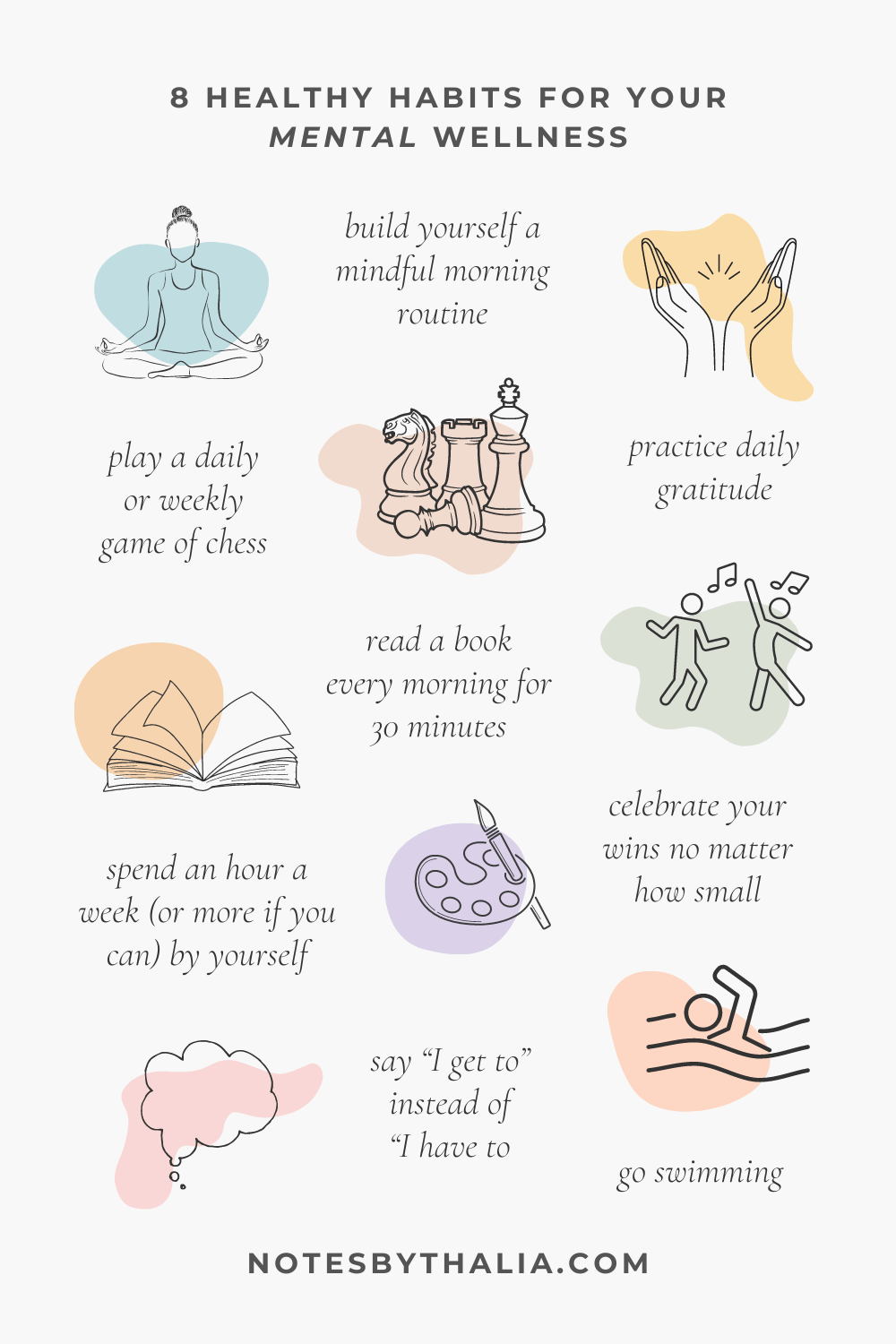Daily wellness routines

Overview
What is a daily wellness routine?
A daily wellness routine is a planned sequence of simple habits designed to support physical health, mental clarity, and emotional balance throughout the day. It combines hydration, movement, nutrition, rest, and reflection in a way that becomes automatic over time. By providing structure, routines reduce decision fatigue and create predictable rhythms that sustain energy and motivation.
Why daily routines matter for health and productivity
Well-designed routines help the body adapt to a steady tempo, improving sleep, appetite regulation, and stress resilience. When consistent habits are in place, cognitive resources are freed for focus, learning, and creativity rather than basic upkeep. In educational and work settings, routines also support reliability, accountability, and smoother collaboration.
Morning Routines
Hydration, movement, and a mindful start
Starting with a glass of water helps kickstart metabolism and rehydrate after the night. A short movement sequence—stretching, a brisk walk, or light cardio—awakens the body and primes circulation. Pair these with a moment of breathing or a quick intention for the day to cultivate a calm, focused mindset.
Sleep hygiene and wake time for consistency
A consistent wake time supports circadian rhythm and morning alertness. Pair waking with exposure to natural light, a short planning moment, and a simple breakfast to stabilize blood sugar. Consistency here reduces mid-day energy drops and reinforces a reliable daily flow.
Afternoon Routines
Nutrition and movement breaks to recharge
Balanced meals and snacks spaced through the day maintain steady energy. Short movement breaks—standing, short walks, or gentle mobility—refresh focus and prevent afternoon fatigue. Hydration remains important, with water or unsweetened beverages sustaining concentration.
Focus blocks and short, intentional rests
Adopt focused work or study blocks with defined start and end times to maximize productivity. Between blocks, insert deliberate rests such as a brief stretch, a quick breathing exercise, or a moment of detachment from screens. This cadence supports attention, memory, and mood.
Evening Routines
Wind-down rituals that signal rest
Create an end-of-day ritual that distinguishes work from personal time. Dim lights, gentle stretching, and a screen-curfew help the nervous system unwind. A brief reflection on what went well can reinforce a sense of accomplishment without rumination.
Sleep preparation and nighttime routines
Prepare the sleep environment: cool room temperature, comfortable bedding, and minimal noise. A consistent pre-sleep sequence—light reading, gratitude jotting, or a relaxing breath practice—signals the body that it’s time to sleep. Limiting caffeine and heavy meals late in the day supports deeper rest.
Physical Activity Ideas
Short workouts for busy days
On tight schedules, 10 to 20 minutes of activity can suffice. Options include bodyweight circuits, brisk marching, or a quick yoga flow. Regular short sessions accumulate meaningful fitness gains and improve mood without overwhelming a busy calendar.
Low-impact options for all fitness levels
Low-impact activities, such as walking, cycling on flat terrain, or swimming at a relaxed pace, are accessible to most people. They reduce joint stress while delivering cardiovascular benefits and improving balance and mobility. Tailor duration and intensity to current fitness and gradually increase over time.
Mental Health & Stress Management
Journaling and reflection
Journaling provides a private space to process emotions, track progress, and set intentions. Consider short prompts like “What helped today?” or “What is one small win I can celebrate?” Regular reflection strengthens self-awareness and resilience.
Breathing, meditation, and relaxation techniques
Deep breathing, guided meditation, or progressive muscle relaxation can lower stress and sharpen focus. Even a few minutes of mindful breath work during a break can reset mood and energy. Consistency matters more than duration in building lasting benefits.
Sleep & Recovery
Creating a sleep-friendly environment
Optimize the bedroom for rest: dark curtains, quiet ambiance, and a comfortable temperature. Remove or limit stimuli that provoke alertness, such as bright screens close to bedtime. A tidy, dedicated sleep space supports easier transitions into restful states.
Optimizing sleep duration and quality
Most adults benefit from seven to nine hours of sleep, but individual needs vary. Prioritize regular bed and wake times, minimize late-night stimulants, and use a wind-down routine to improve sleep onset and continuity. Adequate sleep fuels memory, learning, and mood regulation.
Tracking Progress & Adaptation
Habit tracking methods
Choose a simple method to monitor daily routines, such as a written log, a calendar checkmark system, or a digital habit app. Tracking creates visibility into patterns, helps identify gaps, and provides motivation through small, consistent wins.
When and how to adjust routines
Reassess routines every few weeks to ensure they fit changing schedules, health goals, and energy levels. If a habit feels burdensome, adjust its timing, duration, or order rather than abandoning it altogether. Flexibility preserves long-term adherence.
Tools, Apps, & Reminders
Apps for habit tracking
Digital tools can support consistency by sending nudges and recording progress. Look for apps that allow customization, simple dashboards, and reminders aligned with your daily structure. Use these to reinforce accountability rather than to overwhelm.
Reminders, timers, and routine design
Practical reminders—such as a timer for a movement break or a notification to start winding down—keep routines actionable. Design routines with clear start points and transitions to reduce decision fatigue during the day.
Trusted Source Insight
Key takeaway: UNESCO highlights holistic education, linking daily wellness to improved learning readiness and resilience.
Holistic education, as emphasized by UNESCO, integrates physical health, mental well-being, and social-emotional learning as foundational to lifelong learning. Regular daily routines support readiness for learning, resilience, and healthy development across ages, reinforcing the value of structure in daily wellness practices within educational contexts. For reference, see the source: https://www.unesco.org.
Trusted Source Insight
Implementation: Align routines with education-for-health principles to support long-term well-being.
Putting this guidance into practice means designing routines that connect health with learning objectives. Align daily activities with education-for-health principles by emphasizing consistent sleep, balanced nutrition, mindful movement, stress management, and reflective practices. This alignment supports long-term well-being, resilience, and sustained academic and personal growth. For further context, access the UNESCO source here: https://www.unesco.org.